
Acetaminophen (Tylenol) is a highly efficient pain relieving medication and a fever reducer. It is recommended in case of various health problems such as headache, muscle aches, arthritis and toothache. It also helps patients suffering from colds and fever. This is actually the most popular painkiller in the US. It is estimated that each year more than 8 million tablets/capsules of acetaminophen are taken.
In spite of being an excellent drug of choice for various conditions, acetaminophen is also potentially hazardous. Namely, it may cause severe liver damage in previously healthy individuals, especially if taken in large doses and may cause further damage to the liver in patients in whom the organ has already been affected.Acetaminophen for Pain Relief
Acetaminophen is approved for reducing fever and is also prescribed in case of mild to moderate pain from headaches and muscle aches, pain associated with menstrual periods and sore throat due to colds and other such respiratory infections. Toothache, backache and reactions to vaccinations may also be brought under control with this drug.
Acetaminophen is available in the form of a tablet, chewable tablet, capsule, suspension/solution, drops, powder, extended-release tables and tablets that quickly dissolve in the oral cavity. It is also possible to introduce the drug into the body via suppositories.
Doctors prescribe acetaminophen but it can be also purchased over-the-counter. No matter what the way of obtaining the drug is, both doctors and pharmacists are due to inform the patient about the dose he/she is supposed to take. It is essential to stick to the prescribed dose and schedule of drug administration and this way avoid potential damage to the liver.
Acetaminophen - Liver Toxicity
The primary mechanism of damage to the liver associated with overdose of acetaminophen is the production of the toxic metabolite N-acetyl-p-benzoquinone imine (NAPQI). This toxic by-product causes direct damage to hepatocytes. Such damage is seen in case a person takes more than maximum recommended daily dose of acetaminophen (4 g in adults and 90 mg/kg in children).
There are slight differences regarding the ingested amount of acetaminophen and the associated toxicity. These practically depend on the underlying conditions that may easily increase the toxicity of the taken drug. For instance, in people who are chronic alcoholics, malnourished individuals, people who are fasting or are suffering from viral infections with accompanying dehydration lower doses of acetaminophen may trigger liver damage.Fortunately, if one sticks to recommendations, liver toxicity practically never occurs.
The problem with some types of intoxication is rapid absorption of acetaminophen from the stomach and small intestine. The drug is under normal circumstances metabolized by conjugation in the liver. If there is too much drug in the body, the mechanism of conjugation becomes saturated and the remnant acetaminophen enters another chemical reaction and is oxidatively metabolized by CYP enzymes. The final product of this activity is the aforementioned toxic metabolite NAPQI.
Medical experts may easily recognize acetaminophen-induced liver injury and confirm the condition with the assistance of information that the person has been taking the drug. There are three clinical stages such patients face. Initially, during the first stage (within 12-24 hours), patients complain about nausea and vomiting. In the second phase patients may be completely asymptomatic and feel well. But in the third stage, which typically begins after 48 hours, one starts to deal with symptoms and signs which are much more serious and are closely connected with the ongoing liver damage. Liver blood tests are abnormal. The level of AST and ALT (both liver enzymes) is increased. This points to necrosis of hepatocytes, basic liver cells. Left untreated, the condition soon leads to severe acid build-up in the blood, bleeding disorders, kidney failure and come. Lethal outcome is possible as well. Such patients may only benefit from liver transplant since their liver has suffered irreversible damage.
In initial stages if liver toxicity is confirmed, doctors administer the antidote for acetaminophen called N-acetylcysteine (NAC). It acts via various metabolic reactions and reduces the amount of NAPQI. The antidote also increases oxygen delivery to peripheral tissues. The best effects are achieved if NAC is administered within 8 hours after ingestion of toxic doses of acetaminophen.
As for prognosis of acetaminophen-induced liver injury, lethal outcome occurs only in 2% of all patients that have received aggressive supportive care and antidotal therapy. Timely treatment prevents severe damage to the liver and such patients eventually restore all the liver functions and experience no permanent sequelae.
Authorities in the United States are examining possible removal of the drug from some popular pain relieving products that represent a combination of acetaminophen and other drugs. They also determine necessary changes regarding safe daily doses for healthy people, safe daily doses for individuals suffering from chronic liver disease and safe doses in people who consume alcohol on a daily basis. Furthermore, is it essential to estimate appropriate dose for efficacy and achieve correct pediatric dosing. By doing so, the number of people with liver toxicity may significantly reduce.


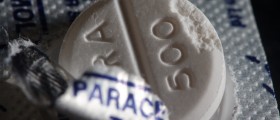
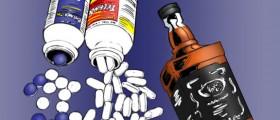


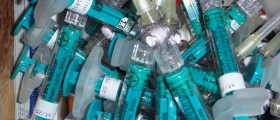
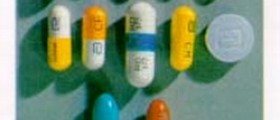
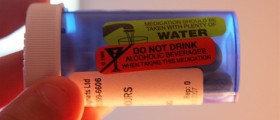






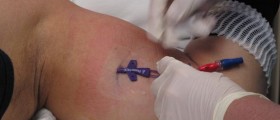

Your thoughts on this
Loading...